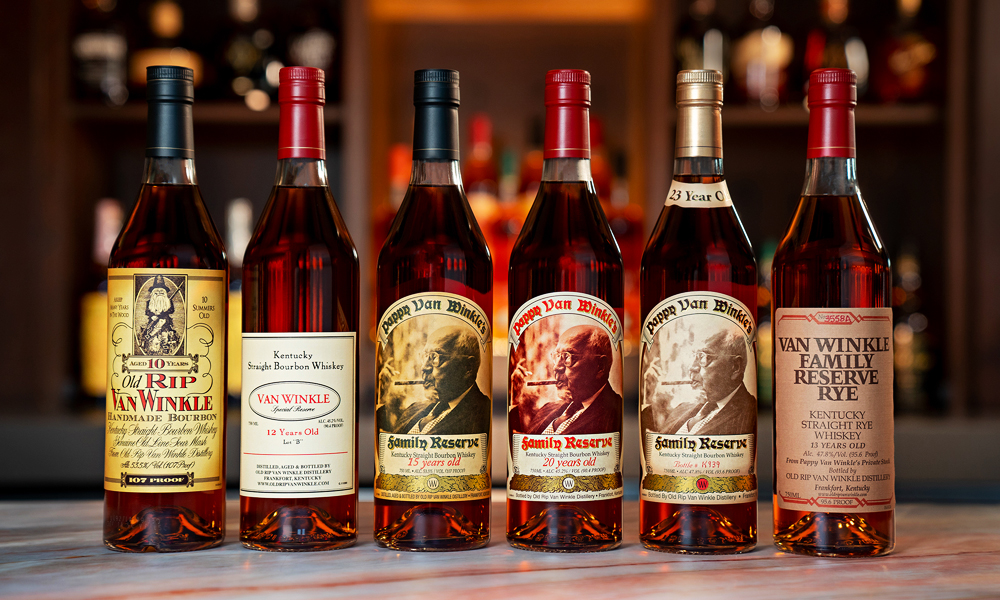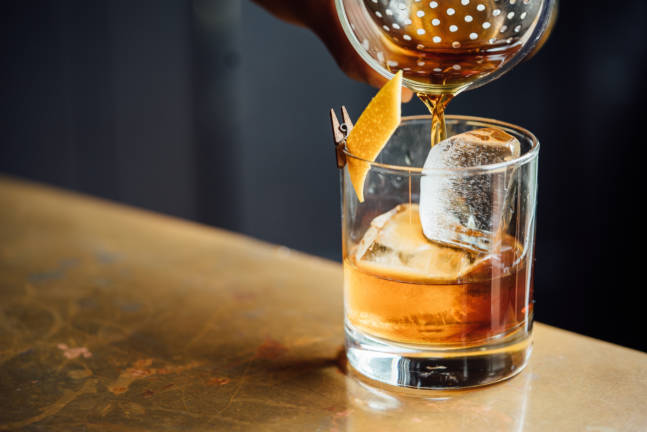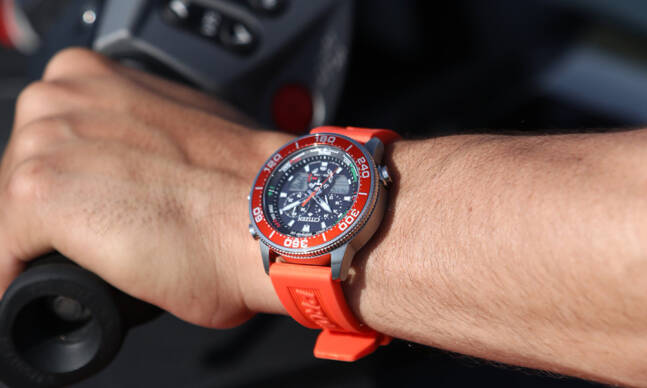Pappy Van Winkle is the unicorn of bourbons. People say it’s real, but we’ve only really seen it in pictures, and most of them probably had some image doctoring going on. For all we know, it could have been a pasted on label to a bottle of iced tea. Though, also for all we know, it could be totally real and what Bigfoot drinks with his college buddies every time they get together in the old cave.
The point is, a bottle of Pappy Van Winkle Family Reserve is super rare and the vast majority of people will go their entire lives without sampling any. That kind of makes sense though, as their normal retail price of between $80 and $250 is high enough to prevent a lot of people from partaking. And that’s before the bottles hit the aftermarket, where they routinely fetch anywhere from $750 to over $5,000.
Need an example? Here’s a bottle of 20-year-old going for more than four grand.
But why? Why on earth would we pay thousands of dollars for something we can’t rationalize getting drunk on, also known as the primary reason for alcohol? Is this really a drink people have because they like how it tastes? Why would people tolerate such insane prices for simple alcohol?
Well, here’re a few reasons.
Supply and Demand
Let’s first address the multi-thousand-dollar-price-causing-elephant in the room (or state the obvious. Pick whatever expression you want): The main cause of Pappy’s price lies in its availability or lack thereof. The Old Rip Van Winkle Distillery (which actually isn’t a distillery at all), only releases between 7,000-8,000 cases (and we’ll talk about that number for recent releases) of Family Reserve every year, which makes it excruciatingly rare and highly collectible. So much so that lottery systems have been built just to give people the chance to swipe a bottle.
Bourbon drinkers go so nuts for a taste of this sauce that there even used to be a tracker app you can use to find some. It sucked while it existed, but that didn’t stop people from using it, since it was one of the few reliable, not-luck-or-mortgage-based ways of getting a bottle.
Moreover, the era of rare bourbon collecting is at its peak. More and more folks are seeking out and collecting high-end bourbon. The ultimate irony is that most of these collectors will simply hold onto these bottles, leaving the contents unopened and, hypothetically, increasing in value. This in turn pushes the demand further and further.
Aged to Perfection
One of Pappy’s most noticeable distinctions is its aging process. Even its “bottom shelf” offering, the 15-year label, is still aged more than three times as long as brands like Jim Beam, Jack Daniels, and twice as long as Bulleit. Most distilleries are like those last three. They’ll offer some 3 or 5-year option, then have their special select reserves that hit 7 or 10 years, with a few distillers aiming for a lot longer. Pappy’s pretty much the only expression we can think of that starts at 15 and goes up from there.
And when it comes to bourbon (and whiskey at large), the longer it sits in its barrel, the better it generally is. Young bourbons tend not to have huge differences in taste, though we’ll definitely get crucified by some for saying that. If everyone’s using the same grain combinations, bourbon’s really big differences don’t start to show up until the whiskey’s had more of an opportunity to interact with the barrel. Most of the taste comes from the barrels themselves, so if you go dumping them out in 3 years, that wannabe moonshine simply doesn’t have the character of that spent the better part of the Bush and Obama administrations soaking in oak.
Awards
Pappy’s has won just about every award worth winning, including Wine & Spirits “Spirit of the Year” award, a Double Gold Medal at the San Francisco World Spirits Competition, a Best-In-Class Gold Medallion in the International Wine and Spirit Competition, and a score of 99 from the Beverage Testing Institute. It feels like there are a million others, so we’re just going to let you check out their awards page for yourself.
Also, we don’t necessarily need to convince you that Pappy Van Winkle deserves what it gets. You wouldn’t be reading this if you didn’t have some idea as to the reputation Pappy Van Winkle has in the whiskey drinking world. But we thought it was important to talk about their accolades, if only to put a list to what people think of them.
It’s Really F*cking Good
Your question of, “Is the bourbon even good?” is a valid one and the answer would have to be; Well… yes. It’s so good that celebrity chef and social culinary anarchist Anthony Bourdain once announced on Twitter that he was seriously considering a Pappy Van Winkle-themed full back tattoo. No, we aren’t kidding. We knew he was a fan, but not that level. As far as we know, this never materialized. But Anthony Bourdain’s willingness to turn his body into a bourbon/ink canvas should be considered a pretty serious stamp of approval.
In the world of bourbon, Pappy is a unique one. Obviously, from all the awards. Many attribute Pappy Van Winkle’s Family Reserve’s taste to its heavy use of wheat over rye or corn. It gives it less of a bite, and is softer than most other bourbons, which compliments its velvety mouthfeel and notes of vanilla, cherry, and light smokiness very well. It’s not a mixing bourbon, so don’t commit that capital sin (we’ve heard there are roving bands of Pappy Van Winkle vigilantes who are always up for a good maiming). Sip it like a gentleman and dissect the flavors for yourself. Provided you can find a bottle.
Want to read more about the best bourbon? Click here for Cool Material’s Guide to Bourbon.





